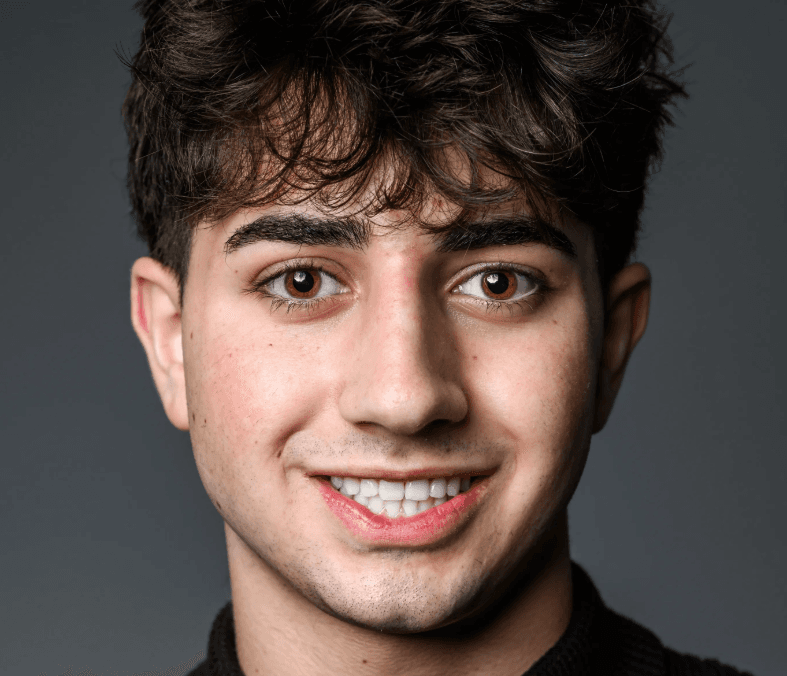
Zach YadegariFounder
How I built an AI-powered calorie tracking app that disrupted the fitness industry and scaled to $24M in yearly revenue.
Founder Stats
- AI, Health & Wellness, Technology, SaaS
- Started 2015
- $2 million/mo
- 20 employees team
- USA
About Zach Yadegari
Zach Yadegari is the founder of Cal AI, an innovative application that uses artificial intelligence to simplify calorie tracking for fitness enthusiasts. Starting from his personal struggles with calorie counting, Zach created a solution that allows users to take pictures of their food to automatically calculate nutritional information. Prior to Cal AI, he launched TotallyScience.co, a popular unblocked games website during the COVID pandemic. His entrepreneurial journey showcases the power of identifying clear user pain points and building streamlined solutions with strategic marketing approaches.
Interview
June 8, 2024
How much revenue did your app generate last month, and what's the projection for the year?

Last month, Cal AI made just over $2 million. By the end of the year, it's expected to exceed $24 million.
What inspired you to create Cal AI?

I was always very skinny and started going to the gym to impress girls at school. I learned I needed to eat in a calorie surplus, but tracking calories was boring and hard. So I thought, what if I could just take a picture of my food and it tells me the calories?
What was your first experience with building apps or websites?

I wanted to make games when I was seven, so I begged my mom to send me to a coding camp. That camp didn't teach me much, but it sparked my interest. I started learning from YouTube and built my first app at age 12.
How did you come up with the Totally Science website?

During COVID, schools gave out Chromebooks and students used them to play games. I combined all the scattered unblocked game links into one site. I called it TotallyScience.co so it wouldn't get blocked.
How did you make money from Totally Science?

At first, I didn't even try to make money. When I finally added Google AdSense banner ads, I made over $100 on the first day.
What did you do with the money you made from Totally Science?

I saved it at first. Then later, I used it to invest into building Cal AI. I put $130,000 into it.
Why did you choose to build Cal AI with co-founders instead of doing it alone?

I believe with good co-founders, you can go much further. Everyone is motivated and has equity, so we all push hard. We're faster and stronger as a team.
What was your blueprint for launching Cal AI?

I started with marketing in mind. I focused on one powerful feature take a picture of food and get calories and built the whole app around that. Then we worked with influencers in the fitness space to get attention.
Why do you think Cal AI succeeded where other apps didn't?

We made the app very simple. It just had a calories-left page and a settings page. Also, we launched fast, used influencers, and knew our users really well.
How did you find the right influencers to promote your app?

We built internal tools to help predict ROI. Followers don't matter views and engagement do. We look at things like audience age, gender, niche, and loyalty.
Do you let influencers create content their own way?

Yes, we give them full creative freedom. They know what gets views. We just ask them to naturally include Cal AI in their usual content.
What's the biggest mistake brands make with influencer marketing?

They don't know how to predict if the influencer will bring results. Many brands spend too much without tracking ROI properly.
How do you keep churn low with a subscription model?

We offer a yearly plan that's much cheaper $30 per year or $10 a month. Most people choose the yearly plan, and we haven't had many renewals yet, so churn isn't showing yet.
What do you think is your biggest moat against competitors like MyFitnessPal?

Our influencer network. We have exclusive deals with over 250 influencers. Also, our app is much simpler. MyFitnessPal is bloated with too many features.
What's the hardest part of being successful so young?

It's harder to relate to people my age. There are fewer people I can connect deeply with. But I'd still choose this path every time.
Was Cal AI a lucky success or the result of effort?

I don't think it was luck. We built five apps before it. We kept learning and trying. I told my co-founder, "If we keep going, one will take off." We weren't going to stop until it happened.
Table Of Questions
Video Interviews with Zach Yadegari
Zach Yadegari on Building Cal AI
Related Interviews

Mark Shapiro
President and CEO at Toronto Blue Jays
How I'm building a sustainable winning culture in Major League Baseball through people-first leadership and data-driven decision making.

Harry Halpin
CEO and Co-founder at Nym Technologies
How I'm building privacy technology that protects users from surveillance while making it accessible to everyone, not just tech experts.

Morgan DeBaun
Founder at Blavity
How I built a digital media powerhouse focused on Black culture and created a platform that amplifies diverse voices.




